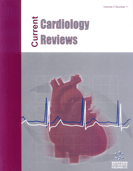Abstract
The ability to determine regional myocardial blood flow (MBF) in absolute estimates by positron emission tomography (PET) contributes to the non-invasive identification and characterization of early stages of the development of coronary artery disease (CAD). Measurements of MBF at baseline, during pharmacologic vasodilation, or during physiologic stimuli, such as treadmill exercise or cold pressor testing (CPT), may permit a comprehensive assessment of the coronary circulatory function. By assessing alterations of MBF in absolute units (ml/g/min) in response to these stimuli, the functional consequences of morphological and/or functional changes in the coronary arteries may be identified before any angiographic-morphological changes are present. Thus, such measurements of MBF expand the diagnostic scope of conventional SPECT perfusion imaging to detect hemodynamically obstructive CAD, based on heterogeneity of relative myocardial perfusion, and early functional abnormalities of the coronary circulation in the absence of manifest CAD. Notably, invasive angiographic measures that indicate an impairment of endothelium-dependent coronary vascular function provide predictive information for future cardiovascular events. Consequently, it is intriguing to speculate that the non-invasive approach of PET flow-measurements to identify abnormal coronary circulatory function could serve as an important tool to identify individuals at increased risk for developing CAD and its atherothrombotic complications. MBF measurements by PET have been shown to allow the monitoring of beneficial effects of lifestyle modification, lipidlowering dietary changes, antioxidant interventions, effects of HMG-CoA reductase inhibitors, and effective glucoselowering therapy on coronary circulatory function. Whether such improvements in coronary vascular function do indeed translate into an improved clinical outcome in these patients and predict a reduction in cardiovascular events remains to be investigated. This review article describes PET-measured estimates of MBF, examines the responses of MBF to physiologic and pharmacologic stimuli and their relationship to coronary circulatory function, and examines the value of these measurements of MBF for monitoring medical intervention with regard to coronary vascular function.
Keywords: nitric oxide (NO), cold pressor testing (CPT), endothelium, Acute coronary syndrome (ACS), c-reactive protein (CRP)


















